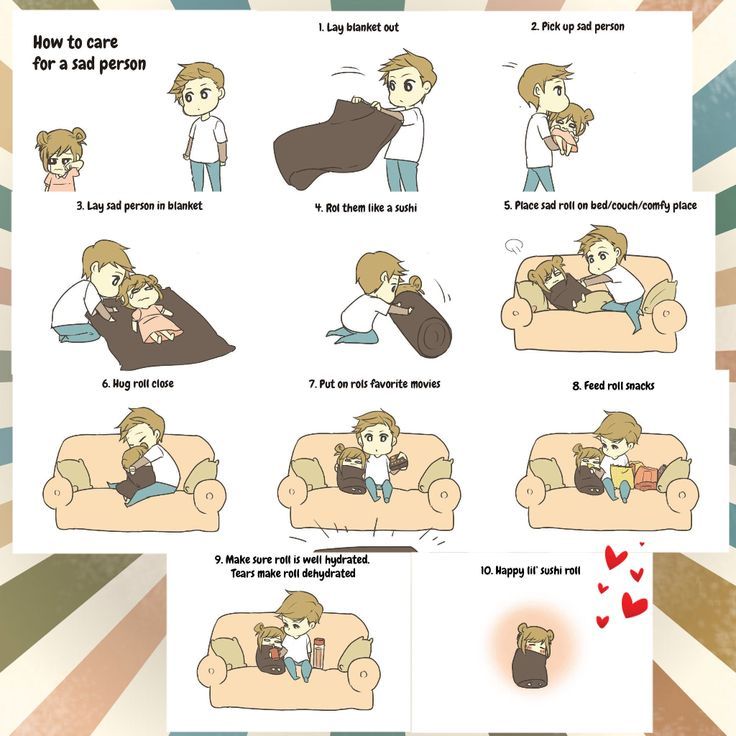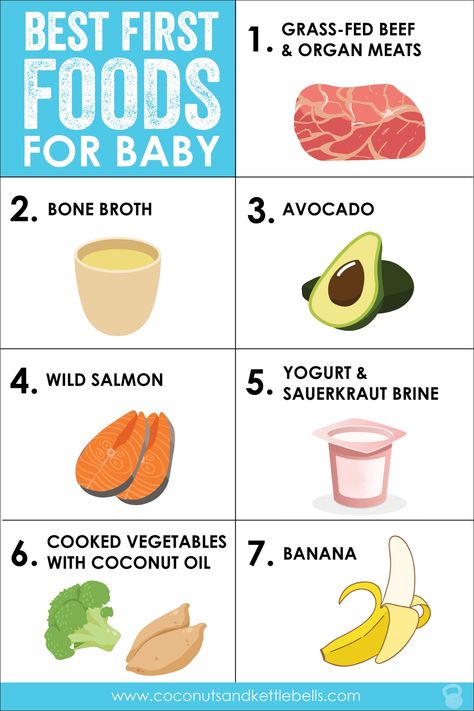Baby on demand feeding
Feeding On Demand | Feeding Your Baby
The early days with your baby are a great time to get to know each other. This can be done by keeping your baby close to you when you bottle feed, enjoying skin contact. Babies will feel more secure if most feeds are given by parents or main caregivers, especially in the early weeks, as this will really help you bond with each other.
- Bottle feeding your baby
- Cluster feeding
- Feeding on demand
- How to burp your baby
Feeding on demand
You do not need a feeding schedule. Health professionals recommend "responsive" or "on demand" feeding – this means following your baby's cues and feeding them when they are hungry.
Although most babies gradually settle into a feeding routine, they vary in how often they want to feed. Feed your baby when they show signs that they are hungry. Babies tend to feed little and often, so they may not finish their bottle. Never force your baby to finish the bottle – always be led by your baby.
Unused infant formula that has been kept at room temperature must be thrown away within 2 hours. Check out our guide to making up a feed to find out more.
After a while, you will get to know your baby's hunger signs. Your baby may:
- try to find something to suck – usually their hands or fingers
- move their eyes around
- "root around" or look for the teat of the bottle
- start wriggling and getting restless
- open and close their mouth
If you can spot these early signs before they start crying for food, your baby will be easier to feed. If your baby is upset, try soothing them before feeding – a cuddle and some skin-to-skin contact may help.
Babies cry for lots of different reasons. If they have been fed recently then hunger is unlikely to be the cause of their crying. The NHS website has lots of useful information on how to soothe a crying baby. You can also have a look at our guide on bottle feeding challenges which covers reflux and colic.
You can also have a look at our guide on bottle feeding challenges which covers reflux and colic.
Paced feeding
Paced feeding is way of giving your baby more control over feeds. Babies usually take small amounts of milk and stop for a rest, and then take more. You can help them to "pace" their feeds so that it mimics the way they would breastfeed.
Start by touching the teat on your baby's top lip, inviting your baby to draw the teat into their mouth. Keep the bottle almost horizontal – just very slightly tipped to prevent the milk flowing too fast. Watch your baby for signs that they are finished or need a break, as this gives them time to feel full and avoid overfeeding.
Your baby might become upset when you take the teat away from their mouth. If this happens, try tilting the bottle down with the teat still in their mouth – this will slow down the milk flow, but still feel comforting to your baby.
Never force your baby to finish a feed as this will be distressing and can mean your baby is overfed.
Night feeds
A big feed does not mean that your baby will go longer between feeds. Your baby is likely to need night feeds for at least the first few months of their life. You can expect night feeds to reduce as your baby gets older.
Feeding on demand: How to read your baby's hunger cues
Feeding on demand, or responsive feeding, means feeding your baby whenever they signal that they're hungry rather than according to a set schedule.
On-demand feeding doesn't mean your baby is being demanding, it means you're feeding them according to their hunger and their needs. New babies have tiny tummies (the size of a walnut) and need to eat frequently.
Feeding on demand: How it works
Breastfeeding on demand and bottle-feeding on demand are similar. With either method, you'll look to your baby's hunger cues to know when it's time for a feeding, keeping in mind that newborns need to eat often.
In the first few weeks of life, you'll probably feed your baby about every 1. 5 to 3 hours, or around 8 to 12 times a day. For formula-fed babies, the time intervals might be a little longer because formula takes longer to digest than breast milk.
5 to 3 hours, or around 8 to 12 times a day. For formula-fed babies, the time intervals might be a little longer because formula takes longer to digest than breast milk.
These time frames can give you an idea of how often you'll be feeding your baby, but time shouldn't be the rule. It's more important to feed newborns when they show signs of being hungry (more on that below).
Feeding on demand is recommended, especially in the early weeks, because:
- Responding to your baby's hunger cues will result in better feeding sessions and healthy weight gain for your baby.
- If you're breastfeeding, frequent feeds will signal to your body to make breast milk and will boost your milk supply.
- Responsive feeding helps your baby develop good eating habits and learn to self-regulate their eating. It may lower the risk of obesity later in life.
- Learning your baby's hunger cues helps you connect and bond with your little one, which has far-ranging benefits.
 One study even showed that feeding babies on demand was associated with better cognitive and academic outcomes when they were older.
One study even showed that feeding babies on demand was associated with better cognitive and academic outcomes when they were older.
Scheduled feedings for newborns have been linked to poor weight gain. And they may contribute to early weaning in breastfed babies, since they can lead to reduced milk production.
How to read your baby's hunger cues
It can be confusing as a new parent to know what your baby needs. Are they hungry? Uncomfortable? Need a diaper change?
Advertisement | page continues below
As you get to know your newborn, you'll start to understand why they're crying and recognize their hunger cues – signs your infant will give you before they get to the point of crying to be fed.
Here are the early baby hunger cues to watch for:
- Moving their mouth; making sucking sounds or motions
- Smacking or licking their lips
- Bringing their hands to their mouth
- Sucking on their fingers or fists
- Clenching their fists
- Rooting.
 Rooting is a newborn reflex – babies turn their head toward anything that touches their face and open their mouth, looking for a nipple.
Rooting is a newborn reflex – babies turn their head toward anything that touches their face and open their mouth, looking for a nipple.
It's best to feed your baby as soon as you notice them making any early signs of hunger, before they're fussing or crying. You'll have more success feeding them before they cry. Once they're crying, you may need to calm them down before they'll successfully latch to a breast or bottle and get a good feeding.
While being responsive to your baby's hunger cues is important, also be aware that some very young babies don't yet have the strength to wake up and demand to be fed. Sometimes a premature, jaundiced, or sick baby is too small and sleepy to cry, conserving energy for growth and recovery instead.
If your baby's hunger cues are slight or nonexistent, be sure to wake them at least every three hours and encourage them to nurse or take a bottle. A newborn who regularly sleeps longer than three to four hours at a stretch needs close monitoring to make sure they gain enough weight.
How to read your baby's fullness cues
When feeding on demand, it's also necessary to know when your baby's had enough. Don't push them to eat more when they're full.
Signs a baby is full include:
- Unlatching from the breast
- Starting and stopping feeding often
- closing their mouth or turning away from the breast or bottle
- slowing down and falling asleep
- seeming content and happy
- hands going from a clenched fist to open and relaxed
If your baby acts like they're done eating, but you're not sure that they've gotten enough, try burping them and waiting a minute before offering more. If they still don't want to eat, stop feeding.
You'll know if your baby is getting enough to eat if you hear them gulping and swallowing during a feeding, they're gaining weight as expected, and they're having enough wet diapers (two to three per day at first, then five to six per day). Here's more specific information on how much breast milk or formula your baby needs, and how to tell whether they're getting enough.
What if my newborn is constantly hungry?
It's normal to feel like your newborn is constantly hungry – at first, they do little besides eating, sleeping, and pooping.
During the early weeks of breastfeeding, you may feel as though you're nursing all the time. That makes sense: If you're nursing every two hours, and each nursing session takes 30 minutes, you'll only have an hour and a half between sessions. (This is just an example, because how long a newborn nurses varies).
Bottle-fed babies will need to eat frequently, too.
If your baby seems hungry soon after eating, go ahead and feed them again. Keep in mind, too, that babies are just hungrier on some days than on others and will want to eat more than usual. These days are called "frequency days" and are thought to precede growth spurts.
During growth spurts, your baby will probably want to cluster feed. Cluster feeding is when your baby eats frequently, sometimes even 30 minutes after they last ate.
Feeding your baby on demand can be taxing for you, especially on frequency days when they cluster feed. Try to take care of yourself by asking your partner or another family member or friend to help out.
If you're breastfeeding, you can introduce a bottle once breastfeeding is well established and ask your partner or a loved one to do some of the feedings. (You can pump breast milk or supplement with formula.) Others can also help by changing or soothing your baby, and helping with household chores and other tasks while you take opportunities to nap or rest.
When should I stop feeding on demand?
It's most important to feed on demand during the newborn stage – the first weeks of your baby's life. This is to ensure they get accustomed to eating and gain weight properly.
As your baby gets older, probably around 2 months old, they'll naturally fall into more of a predictable schedule. They'll also need to eat a little less frequently, usually every 3 to 4 hours.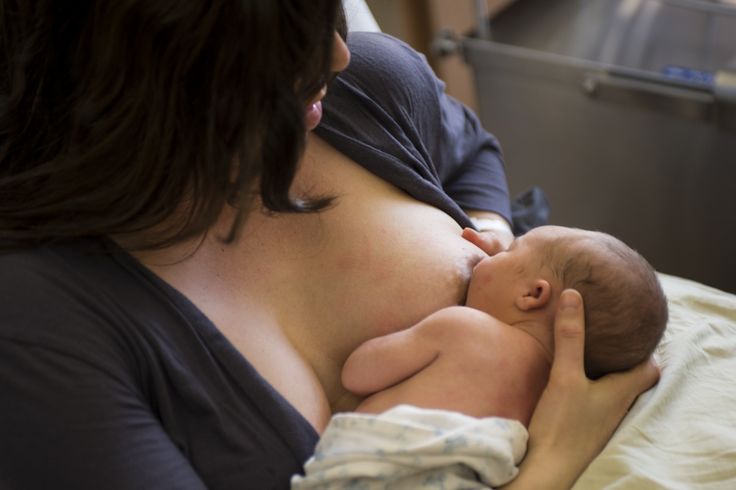
However, sickness, transitions, and growth spurts may throw off your baby's typical schedule and they may want to eat more frequently during those times.
You don't have to stop feeding on demand if it's working for you and your baby. However, usually you'll both develop a more structured routine. You won't need to look to hunger cues to see when it's time for a feeding, because you'll know your baby's patterns and preferences.
When your baby starts eating solid foods regularly, they'll gradually need fewer nursing sessions or bottles throughout the day. Between 8 and 12 months old, they'll start having three regular meals and snacks – and start to eat what the rest of the family is having.
Learn more:
- Age-by-age guide to feeding your baby
- How much should my baby eat?
- What to do when your baby's crying for no reason
Breastfeeding on demand
You can often hear from a nursing mother: "I feed on demand, my baby requires a breast every 3.
5 hours." Or: “I have always fed on demand. In a year, we already had 1 feeding in the evening, and my child calmly refused to breastfeed. Before talking about the demand of the child, it is necessary to find out what modern women mean when they say - "I breastfeed."
Modern mothers consider breastfeeding necessary for feeding their baby. Just for feeding. Breast milk is food, the mother supplies the baby with the nutrients necessary for growth and development. When a baby suckles at the breast, he eats. Breastfeeding makes sense only as a process of supplying proteins, fats, carbohydrates, vitamins and microelements.
During suckling, the baby receives the nutrients it needs with mother's milk. This is the absolute truth. There is another unconditional truth, which is not given any importance in modern society, it is not taken into account and is not considered. Breastfeeding for a child is communication with the mother. We need to figure out how the child understands feeding on demand? Can he understand anything at all? Is there any difference for him how he is fed, for 15-20 minutes after 3.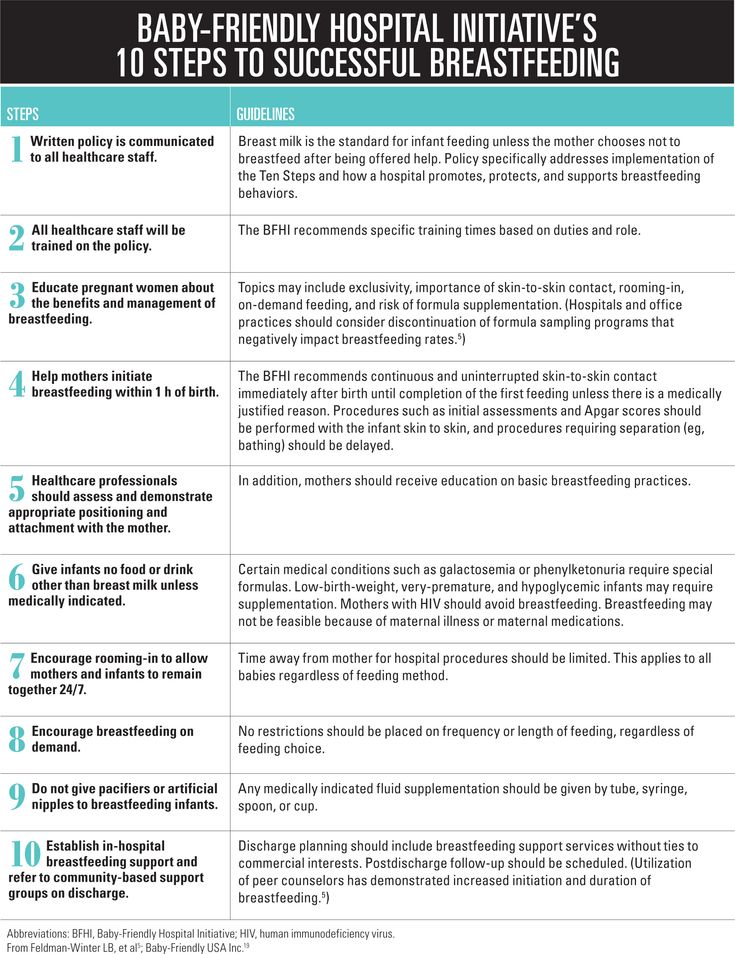 5 hours or in some other way?
5 hours or in some other way?
What is on-demand feeding
On-demand feeding of a newborn baby means putting it to the breast for every squeak or search. Squeak and search movements in newborns, even as early as the second or third day of life, begin to appear much more often than after 3.5 or 2.5 hours. The need for attachments increases rapidly, and by the 10-12th day of life, the need to attach to a child may occur 15-16 or more times a day. Applications vary in duration. The baby can fall asleep and sleep while sucking for, for example, 1.5-2 hours. Can release the breast after 1-2 minutes. And then ask her again. Why does a child need such frequent contact with his mother's breast?
That's why. Being in the mother's belly, in a calm, familiar environment, listening to the noises of the mother's body, being in a warm, cramped, confined space, the baby sucked his fist, fingers, loops of the umbilical cord, swallowed amniotic fluid. Learned to suck and swallow. After birth, experiencing discomfort for any, the most insignificant reason, the baby tries to get rid of it. You can get rid of discomfort by getting into the usual conditions of a comfortable stay. The only place where the baby after birth can feel the sensations familiar to him is in the arms of the mother. The only familiar action is sucking. The only familiar taste and smell is the taste and smell of milk and lube in the areola. Milk and lubricant have an odor and taste similar to the taste and smell of amniotic fluid. Therefore, experiencing discomfort, the baby squeaks, or begins to look for an object to suck with his mouth. Ideally, it is immediately applied to the chest. The baby becomes warm, cramped, he hears the beating of his mother's heart, breathing, grumbling in the intestines, he sucks and feels the familiar taste and smell. If such an action happens constantly, the baby gains confidence, no matter what happens, he will solve all his problems with his mother. The place of comfort is now under the breast, and you can suck on the breast.
After birth, experiencing discomfort for any, the most insignificant reason, the baby tries to get rid of it. You can get rid of discomfort by getting into the usual conditions of a comfortable stay. The only place where the baby after birth can feel the sensations familiar to him is in the arms of the mother. The only familiar action is sucking. The only familiar taste and smell is the taste and smell of milk and lube in the areola. Milk and lubricant have an odor and taste similar to the taste and smell of amniotic fluid. Therefore, experiencing discomfort, the baby squeaks, or begins to look for an object to suck with his mouth. Ideally, it is immediately applied to the chest. The baby becomes warm, cramped, he hears the beating of his mother's heart, breathing, grumbling in the intestines, he sucks and feels the familiar taste and smell. If such an action happens constantly, the baby gains confidence, no matter what happens, he will solve all his problems with his mother. The place of comfort is now under the breast, and you can suck on the breast.
This whole process is biologically justified. A newborn child does not feel the feeling of hunger, this feeling is not formed in him. It will begin to form at about two months of age. How to feed a creature that does not experience hunger ?! How to encourage him to take some action to get food? This can be done only at the expense of some other incentives. This stimulus for the newborn is constant bodily discomfort, thanks to which he wants to suckle all the time! The most intense, frequent and prolonged sucking in infants is observed in the first two or three months of life. It is in these first months that the main weight gain of the baby occurs.
Feeding in the first month
Baby falls asleep with breast in mouth, sleeps sucking for a while. Falling asleep deeply, lets go of the chest. After sleeping for a while, he wakes up, and is applied on waking. After sleep, he can stay awake for some time, for example, an hour and a half. During wakefulness, he may feel discomfort 2-3 times, for example, from a completely natural desire to pee, and having called his mother for help, having kissed for a couple of minutes, he will do his deeds. Then he will want to sleep, feel discomfort and, kissing his chest, will again fall asleep sucking. After some time, he will wake up and attach again. Then again a little "walk". And after some time, he will fall asleep at the chest again.
Then he will want to sleep, feel discomfort and, kissing his chest, will again fall asleep sucking. After some time, he will wake up and attach again. Then again a little "walk". And after some time, he will fall asleep at the chest again.
The daytime naps of a one-month-old infant feeding on demand vary in duration and number. There can be 4-6 dreams during the day, and they can last from 5-15 minutes to 2-2.5 sometimes 3 hours. "Around" each dream, the baby is applied to the chest, and applied between dreams several times. At night, the child falls asleep at the breast. Usually in the early morning hours, he begins to fuss and apply. In the morning, he almost never fully wakes up. The baby sleeps, from time to time, sucking on his mother's breast. Waking up in the morning, the baby is again applied to the chest. If you count all the attachments that have happened in a baby of one month of age, then approximately 16-20 attachments are obtained. This is how a newborn human cub behaves if it is given the opportunity to behave in accordance with physiological and psychological needs, which, by the way, are genetically determined. The child of the first months of life does not separate his personality from the personality of the mother and from her breast. Mom and her breasts, and everything connected with them, are the universe of the baby and himself.
The child of the first months of life does not separate his personality from the personality of the mother and from her breast. Mom and her breasts, and everything connected with them, are the universe of the baby and himself.
In most cases, a modern woman, being afraid to “accustom a child to hands”, strives to limit his requests for suckling. A pacifier and a bottle of tea or water come to her aid in this matter. They, too, can be sucked ... The need for sucking seems to be satisfied. But only the need for communication with the mother during suckling is not satisfied, the peculiar chain of mutual assistance and cooperation between mother and baby is destroyed, the formation of maternal affection and concentration is disrupted. Is the difference in the two actions noticeable to the reader: the baby cried, the mother took him, put him to her chest and started rocking him, or gave him a pacifier and started rocking the stroller, even with the words “Why are you crying, my sun?”
The modern woman who gives a pacifier and pumps a stroller is not a bad person deliberately harming an infant. She is simply in captivity of prejudices regarding the relationship between mother and baby. She does not know how to behave correctly, does not know what to do in accordance with the natural needs of the child. If you tell her what the child really needs, she will exclaim in horror: “What is it, don’t let him get away with?!” Indeed, the child of the first months of life must not be let off the hook. For a woman who does not know how to comfortably carry a baby, and who does not know how to feed him in various positions (sitting, lying, standing and even moving), this can be very difficult. Especially if she is not sure of the correctness of her actions.
She is simply in captivity of prejudices regarding the relationship between mother and baby. She does not know how to behave correctly, does not know what to do in accordance with the natural needs of the child. If you tell her what the child really needs, she will exclaim in horror: “What is it, don’t let him get away with?!” Indeed, the child of the first months of life must not be let off the hook. For a woman who does not know how to comfortably carry a baby, and who does not know how to feed him in various positions (sitting, lying, standing and even moving), this can be very difficult. Especially if she is not sure of the correctness of her actions.
An action that should become automatic for the mother of a newborn: when the baby cries or shows other signs of anxiety, put the baby to the breast.
What's next?
The baby is growing. A fairly stable rhythm of daytime sleep begins to form in him, and a 3-4-month-old baby behaves quite differently from a newborn. Feeding on demand at this age looks something like this...
Feeding on demand at this age looks something like this...
- At three months, the baby has 10-12 feeds during the day and 2-4 at night. There are frequent applications for a short time, but their number is reduced. There may be a long night break in feedings, about 5 hours, but this is very rare. Much more often the night break is 2.5-3.5 hours. By this age, the baby's body is noticeably rounded.
- At four months, the baby begins to breastfeed noticeably less frequently. The main feedings are associated with sleep: the baby suckles before bedtime, during awakening and during sleep, both daytime and nighttime. In this regard, he has a fairly accurate feeding regimen. And many babies stop breastfeeding when they wake up after daytime sleep, sometimes as early as 2.5-3 months.
- At five months, the baby has 8-10 daytime feedings and 2-3 nighttime, attachments as well as in the fourth month of life, are organized around dreams - the baby eats when going to bed and some babies suck during awakening.

- At six months, the feeding regimen changes. The most active sucking shifts to the last 2-3 hours before waking up from a night's sleep. The period of daytime wakefulness can be divided into two periods: in the morning, when the baby sucked during the night is rarely applied to the breast, and in the evening, when attachments become very frequent. In total, there can be 7-10 day applications and 3-4 night applications. At this age, the baby begins a period of acquaintance with new food - pedagogical complementary foods. Sometimes there are attachments associated with the introduction of complementary foods, the baby “washes down” samples of new food with mother's milk. But many children do not want to drink complementary foods. When complementary foods are introduced to an on-demand baby, it is never meant to replace feedings with complementary foods. This is practically impossible, because the main feedings of the baby are associated with sleep, and mother's breakfasts, lunches and dinners, during which the baby gets acquainted with new food, are located between the baby's dreams, during his wakefulness.

- At seven months, the frequency of application is about the same.
- At eight months, the feeding regimen changes. Since the baby shows high motor activity and is very busy exploring the surrounding space, in the daytime he forgets to breastfeed. In this regard, the number of daily feedings can be reduced to 6-8 times. The baby compensates for the reduction in daytime feedings by increasing the frequency and duration of nighttime feedings up to 6 times.
- In the second half of the year, babies who stopped breastfeeding when waking up after daytime naps recall this habit again. The baby’s daytime sleep in the second half of life, as well as in the region of a year and older, looks something like this: the baby falls asleep sucking, sleeps quietly for a while, for example 1-1.5 hours, then starts tossing and turning, fiddling, worrying, at this moment the mother lies down next to , gives him a breast and the baby can fill up 10-15-30 minutes sucking. Mom may well use this time for her own rest - lie down, read, while the baby sleeps while sucking.
 I know my mother, a lover of embroidery, who used this time specifically for embroidery ...
I know my mother, a lover of embroidery, who used this time specifically for embroidery ... - Breastfeeding becomes more frequent at nine to ten months. In the daytime, this is 4-6 full feedings and about the same number of attachments for various reasons. The baby has new reasons for attachment. If, during active actions to master the world, the baby fills a bump or gets scared, he calms down with his mother's breast. There may be situations when you can comfort the baby by sitting next to him and hugging him. At night, 4-6 feedings remain, the baby begins to suckle more actively in the morning between 3 and 8 hours.
- At eleven months, a baby can already have 2-3 complete complementary foods. Initiation to adult food in the mind of a child is not associated with breastfeeding: attachment to the mother's breast is something other than the desire to get enough of the product they like. As a rule, after the baby has eaten, he feels the need to attach himself to the breast.
 The number of daily feedings remains the same in the child, but the number of short-term attachments increases. There are active mid-morning feedings between 4 and 8 o'clock in the morning.
The number of daily feedings remains the same in the child, but the number of short-term attachments increases. There are active mid-morning feedings between 4 and 8 o'clock in the morning. - At ten or twelve months, the baby, if he is already walking, can sometimes breastfeed every time he comes to his mother, i.e. about every 15-30 minutes. Attachments around dreams and night sucking persist. Therefore, if a mother says that a child suckles once or twice a day, this means that there is no feeding at the request of the child. There are restrictions imposed by the mother, with which the baby has come to terms. He treats breast sucking like food, sucks on a pacifier or a finger to fall asleep or soothe, or falls asleep just like that, without calming down.
- At twelve months, the baby is applied in about the same way.
- At the age of one and a half years, there may already be one daytime nap, so there are fewer attachments associated with sleep. Preserved for morning sucking.
 The baby is very free with his mother's breasts. Sometimes it happens that he comes up to suck just for pleasure. For example, like this: he comes up, climbs on his knees, looks into his mother’s face, smiles, starts to swarm in his shirt, gets breasts, smiles at his breasts, sucks for 30 seconds and leaves.
The baby is very free with his mother's breasts. Sometimes it happens that he comes up to suck just for pleasure. For example, like this: he comes up, climbs on his knees, looks into his mother’s face, smiles, starts to swarm in his shirt, gets breasts, smiles at his breasts, sucks for 30 seconds and leaves.
As for the number of feedings per day when feeding a child on demand, their number is almost never less than 12. A newborn has 12 or more attachments, mostly they are all associated with dreams. And a child, say 1.5-2 years old, can also have about 12 attachments, only 3-4 are associated with sleep, and the rest are short-term attachments for various reasons. I suggest to all mothers reading this text - do not count the application, do not notice their duration. Breastfeed your baby as often as he asks, when you feel the need to.
Moms who don't think about breastfeeding without looking at the clock may get the impression that when breastfeeding on demand, the mother can do nothing but feed the baby.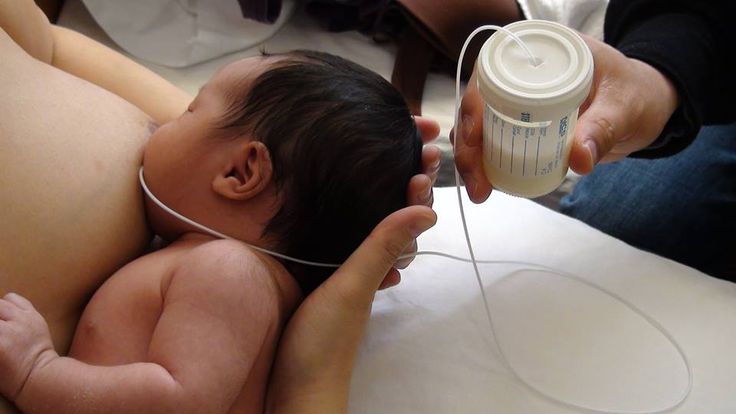 This is wrong. After the birth of a baby, a mother begins another life, she is called life with a baby. That's all. The child is with the mother, not the mother with the child! Feel the difference! You need to be able to organize your life in a different way, in the first months, of course, the help of loved ones is very necessary. In the tradition of many peoples, it was customary for the first 40 days after childbirth to remove a woman from any housework and household chores, she was engaged only in a child. In some nations, objects that the mother of a newborn touched were considered “unclean”, therefore, they preferred to protect the mother from the rest of the household, allocating her a separate “corner” of the house, where no one bothered her and she did not interfere with anyone. Among the Slavs, such a restrictive custom was called a six-week. By 1.5-2 months, the rhythm of daytime dreams begins to form, and the baby has a kind of “regime”, the mother becomes more free.
This is wrong. After the birth of a baby, a mother begins another life, she is called life with a baby. That's all. The child is with the mother, not the mother with the child! Feel the difference! You need to be able to organize your life in a different way, in the first months, of course, the help of loved ones is very necessary. In the tradition of many peoples, it was customary for the first 40 days after childbirth to remove a woman from any housework and household chores, she was engaged only in a child. In some nations, objects that the mother of a newborn touched were considered “unclean”, therefore, they preferred to protect the mother from the rest of the household, allocating her a separate “corner” of the house, where no one bothered her and she did not interfere with anyone. Among the Slavs, such a restrictive custom was called a six-week. By 1.5-2 months, the rhythm of daytime dreams begins to form, and the baby has a kind of “regime”, the mother becomes more free.
For a mother who can't imagine breastfeeding without looking back at the clock, and who is sure that the “right” baby is the baby lying quietly in her crib all the time, feeding on demand will be a complete hassle. It will be much easier for such a mother if she stops looking at the clock and ties the baby to herself with a large scarf or uses a patchwork holder (sling). It will become easier for her if she stops running between the nursery and the kitchen, but takes the baby with her to the kitchen and carries him around the house with her, doing housework, in a box, a cradle, a special chair, if she tries not to put him off often, and pick up as soon as possible, postponing the baby only in case of emergency and not for long.
It will be much easier for such a mother if she stops looking at the clock and ties the baby to herself with a large scarf or uses a patchwork holder (sling). It will become easier for her if she stops running between the nursery and the kitchen, but takes the baby with her to the kitchen and carries him around the house with her, doing housework, in a box, a cradle, a special chair, if she tries not to put him off often, and pick up as soon as possible, postponing the baby only in case of emergency and not for long.
Breastfeeding is not the same as house arrest. In the conditions of modern society, it is possible to organize the exit of a nursing mother to work from about 6 months of age of the baby. If necessary, you can start working from the age of 4 months, but, of course, it is better not every day of the week and not full time. It is the responsibility of a breastfeeding consultant to help a mother organize her return to work.
Sometimes, when I advise mothers on breastfeeding, I suggest that they forget for a second that they are already living in the 21st century. I propose to return, for example, to the cave and ask what they will do if the child woke up at night, how to calm him down? If you are walking through the forest and trying not to attract the attention of predators, how to make the baby silent? If the child is thirsty, what will you give him? What is the baby used to, for thousands of years of its existence? To the fact that he sleeps on his mother while she wanders through the forest with a digging stick in search of roots, and wakes up when mother stops. Since mom stopped, then there is time to wake up and suck. Therefore, even now the child sleeps well, tied to the mother with a patchwork holder, wakes up when the mother, having done a few household chores, sits in a chair to take care of the baby.
I propose to return, for example, to the cave and ask what they will do if the child woke up at night, how to calm him down? If you are walking through the forest and trying not to attract the attention of predators, how to make the baby silent? If the child is thirsty, what will you give him? What is the baby used to, for thousands of years of its existence? To the fact that he sleeps on his mother while she wanders through the forest with a digging stick in search of roots, and wakes up when mother stops. Since mom stopped, then there is time to wake up and suck. Therefore, even now the child sleeps well, tied to the mother with a patchwork holder, wakes up when the mother, having done a few household chores, sits in a chair to take care of the baby.
Some mother, reading about the cave, will be offended, saying that she is a civilized creature. But please think. Man, mother's breast and mother's milk have been created by evolution over millions of years. They are made for each other. Baby food has created progress and more recently. The skills of motherhood and breastfeeding have also been lost by our society quite recently. A person is not physiologically adapted to artificial feeding and a pacifier. The mother's breast will not produce enough milk at 6-7 feedings per day. Nature did not know, when creating man as a mammal, that the time would come when the need for breastfeeding would be satisfied by some kind of pacifiers and nipples.
Baby food has created progress and more recently. The skills of motherhood and breastfeeding have also been lost by our society quite recently. A person is not physiologically adapted to artificial feeding and a pacifier. The mother's breast will not produce enough milk at 6-7 feedings per day. Nature did not know, when creating man as a mammal, that the time would come when the need for breastfeeding would be satisfied by some kind of pacifiers and nipples.
Changes that occur during the formation of the personality of a child who did not have full contact with the mother during prolonged breastfeeding are noted by modern research by psychologists and sociologists. These are changes with a minus sign. It would be better if they were not, these changes.
Breastfeeding is not only important for the baby, it is also important for the mother. During on-demand feeding, the woman's feelings change, a stronger attachment to the baby is formed, the woman becomes more sensitive to the needs of the baby. Deeper affection and understanding are not only preserved in infancy. They persist for life. For clarity, imagine what happens to a woman’s feelings if she tries to “withstand” a child, endures his crying, anxiety. What happens to a woman if she uses the recommendation from one very popular parenting book: "Go to the child if he cries for more than 15 minutes"? Speaking in abstract terms, humanity is interested in reviving the practice of breastfeeding. The revival of this practice is impossible without mothers realizing the true reasons for the child's need for attachment to the breast.
Deeper affection and understanding are not only preserved in infancy. They persist for life. For clarity, imagine what happens to a woman’s feelings if she tries to “withstand” a child, endures his crying, anxiety. What happens to a woman if she uses the recommendation from one very popular parenting book: "Go to the child if he cries for more than 15 minutes"? Speaking in abstract terms, humanity is interested in reviving the practice of breastfeeding. The revival of this practice is impossible without mothers realizing the true reasons for the child's need for attachment to the breast.
Lilia Kazakova, pediatrician,
breastfeeding and childcare counselor leader
Ten Rules for Successful Breastfeeding
The importance of breastfeeding for your baby cannot be overestimated. Mother's milk is the healthiest and safest food that can be offered to a newborn. And besides, it is an important part of the process of communication between mother and baby, helping to set a favorable emotional environment in the family.
Volunteer, consultant of the Association of Breastfeeding Consultants Olga Kabanova told us about how to properly organize breastfeeding, giving a dozen valuable tips.
Here you are together: you and your baby, or even babies. Hello new life! Ahead again are discoveries and adventures, experience and amazing sensations, and soon it will be difficult to imagine how you lived without this little one. In the meantime, get to know each other, smile at each other and get ready to continue this natural chain of conception - pregnancy - childbirth - breastfeeding.
Important for successful breastfeeding:
- Breastfeed within the first hour after delivery . Skin-to-skin contact, mother nearby - this is useful, correct and wonderful;
- Feed the baby on demand , noticing the first search movements (fidgets, turns his head, opens his mouth, sticks out his tongue, groans), without waiting for crying. A calm baby is easier to attach to the breast correctly;
- Be sure to keep night feedings is very important.
 Yes, it is at night, when the baby suckles the breast, that the main volume of prolactin, the hormone responsible for the amount of milk, is produced;
Yes, it is at night, when the baby suckles the breast, that the main volume of prolactin, the hormone responsible for the amount of milk, is produced; - Choose to stay in the same room together. Firstly, it is calmer for mom and baby, and secondly, it makes it possible to apply on demand;
- Trust the duration and frequency of feedings to the child. Breast sucking is not only nutrition, but also a significant contribution to the psychological health of mother and baby;
- Change breasts as much as you like during one feeding. Or not change? All participants in the process should be comfortable;
- Supplement your baby only for medical reasons and doctor's prescription. No need to rush for a mixture and a bottle. If the baby is gaining weight well, adding from 150 grams per week and above, then he has enough nutrition;
- Do not give your baby water for up to six months (before weaning). This is not necessary, because breast milk is 90% water;
- Do not use pacifier bottles or pacifiers.
 The technique of sucking the breast and these "gadgets" are different, the baby can get confused, which in turn can lead to problems with breastfeeding.
The technique of sucking the breast and these "gadgets" are different, the baby can get confused, which in turn can lead to problems with breastfeeding. - Do not pump further if the baby is nearby and is feeding on demand. When the process is organized correctly, the breast produces as much milk as your baby needs.
Breast does not require special washing. A regular shower once a day is enough.
If it is not possible to put the baby to the breast (for example, it is temporarily prohibited for medical reasons or the baby is not near the mother), pump every 3 hours for 15 minutes from the first day. This will be enough to maintain lactation.
Milk usually does not come immediately after childbirth. But this does not mean that in these few days after birth, the baby is hungry. In the first days of life, the need for nutrition of a newborn is not great, and the colostrum that the mother has will be more than enough for him to wait for the established breast feeding regimen.

